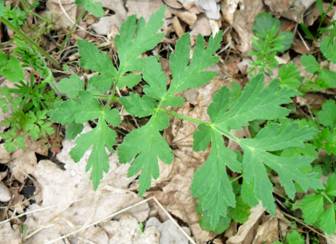
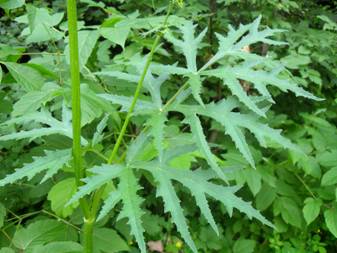
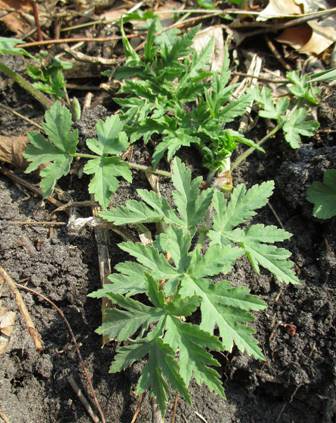
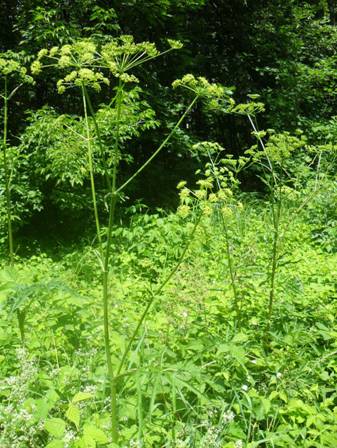
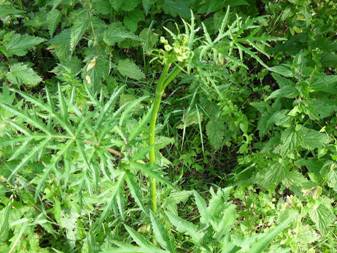
Common Hogweed (Heracleum sibiricum), fam. Apiaceae.
Biennial or perennial plant with spreading leaves, which size and dissection degree can strongly vary depending on the subspecies or the place of growth. It is found in the forest in moist places. In the adult state, probably, inedible. In principle, the roots, young leaves and shoots can be eaten raw or cooked. However, there are more appropriate plants for that; whereas, the hogweed brings a definite danger: getting its juice on the skin, or sometimes just touching the plant increases the sensitivity of that part of skin to the sun many times; in summer, it would cause severe burns. The most dangerous is Sosnovsky hogweed, which was experimentally introduced to culture in North and Central European Russia several decades ago, but now it is considered as a horribly aggressive weed, without any benefits found. Luckily, that species is not found around Kyiv. The hogweeds are mighty plants, which bring abundant crops of green mass, so they are used as a livestock feed, but different species with unequal success.
The common hogweed has sedative, spasmolytic, hemostatic, appetite stimulating, and holeretic properties.